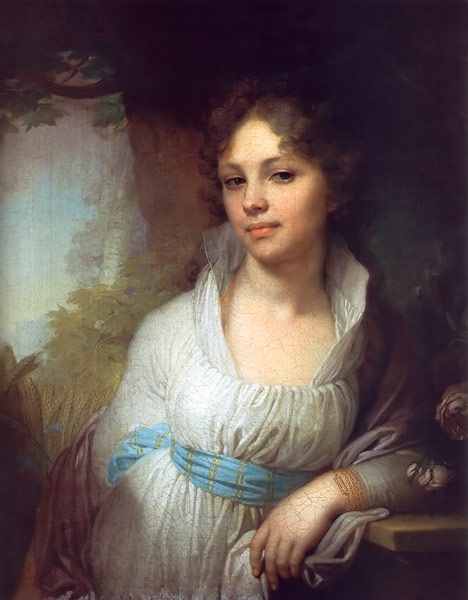Учебное пособие Издательство Томского политехнического университета 2009
| Вид материала | Учебное пособие |
- Редакционно-издательским советом Томского политехнического университета Издательство, 1434.78kb.
- Редакционно-издательским советом Томского политехнического университета Издательство, 3189.24kb.
- Редакционно-издательским советом Томского политехнического университета Издательство, 2424.52kb.
- Редакционно-издательским советом Томского политехнического университета Издательство, 2585.19kb.
- Редакционно-издательским советом Томского политехнического университета Издательство, 1488.99kb.
- Учебное пособие подготовлено на кафедре философии Томского политехнического университета, 1526.78kb.
- Учебное пособие Издательство Томского политехнического университета Томск 2007, 1320kb.
- Учебное пособие Рекомендовано в качестве учебного пособия Редакционно-издательским, 2331.42kb.
- М. В. Иванова Томск: Издательство Томского политехнического университета, 2008. 177, 2610.26kb.
- Я управления рисками в организации рекомендовано в качестве учебного пособия Редакционно-издательским, 1160.94kb.
Федеральное агентство по образованию
Государственное образовательное учреждение высшего профессионального образования
«ТОМСКИЙ ПОЛИТЕХНИЧЕСКИЙ УНИВЕРСИТЕТ»
___________________________________________________________________________________________
Л.А. Хлабутина
История русской живописи
Учебное пособие
Издательство Томского политехнического университета
2009
ББК Ш143.21-923.8
УДК 802.0:7.01(075.8)
Х 55
Хлабутина Л.А.
Х 55 История русской живописи: учебное пособие / Автор- составитель: Л.А.Хлабутина. – Томск: Изд-во Томского политехнического университета, 2009. – 166 с.
(12 pt)
В пособии представлены тексты разного уровня сложности по истории российской живописи, охватывающие период от III до XXI веков н.э. Делается акцент на характере творчества отдельных художников разных направлений искусства. Тексты снабжены вокабуляром, заданиями на совершенствование умений устной речи, чтения, перевода, включены игровые задания, викторины. Содержится большой объем текстов для дополнительного чтения, перевода самостоятельной подготовки презентаций, проектных заданий. В приложении помещены иллюстрации картин, предлагаемых для анализа и описания.
Предназначено для использования на занятиях по практике устной речи направления Лингвистика и межкультурная коммуникация, специальности 031202 «Перевод и переводоведение», для студентов, изучающих английския как первый или второй иностранный язык. Рекомендуется также использовать при обучении студентов-иностранцев, знакомящихся с культурой России.
УДК 802.0:7.01(075.8)
Рецензенты
Кандидат филологических наук, доцент, заведующий кафедрой лингвистики и межкультурной коммуникации ТГПУ
Л.Г. Ананьева
Кандидат педагогических наук, доцент, заведующий кафедрой теории и методики преподавания иностранных языков ТГПУ
О.Н. Игна
© Томский политехнический университет, 2009
© Оформление. Издательство Томского политехнического университета, 200
 9
9
Vladimir Borovikovsky 1757 -1825
Portrait of Maria Lopukhina, 1797
Oil on Canvas, 72 x 53.5 cm
The State Tretyakov Gallery
Moscow, Russia
Contents
Unit 1. Russian Art Movements
1.1. Vocabulary
1.2. Art Movements
1.2.1. Раrt 1
1.2.2. Part 2
1.2.3. Part 3
1.3. The History of Russian Fine Arts
Unit 2. Describing a picture
2.1. Understanding icons
2.2. Rublev Andrei
2.3. Borovikovskii Vladimir
2.4. Bryullov Karl
2.5. Aivasovskii Ivan
2.6. Tropinin Vasilii
2.7. Savrasov Alexey
2.8. Shishkin Ivan
2.9. Perov Vasilii
2.10. Kramskoi Ivan
2.11. Kuindzhi Arkhip
2.12. Repin Ilya
2.13. Surikov Vasilii
2.14. Yaroshenko Nikolay
2.15. Vasnetsov Viktor
2.16. Levitan Isaak
2.17. Serov Valentin
2.18. Role play “Sotheby Auction”
2.19. Quiz 1. Name the Picture
2.20. Quiz 2. Name the Movement and Style
Unit 3. Rusian Museums
3.1. The State Russian Museum
3.2. The Hermitage
3.3. The Tretyakov Gallery
3.4. The Pushkim State Museum of Fine Artes
3.5. The Perm State Art Gallery
Unit 4. Texts for Supplementary Reading and Presentations
4.1. Historical Introduction to Icon Painting
4.2. Theophanes the Greek
4.3. Renaissance Art
4.4. The 18th centrury
4.5. The 19th century
4.6. The Wanderers
4.7. The 20th century
4.7.1. Constructivism
4.7.2. Cubism
4.7.3. Neo-primitivism
4.7.4. Rayonism
4.7.5. Suprematism
4.8. Natalia Sergeevna Goncharova: The Evangelists
4.9. Mikhail Larionov: The Fish
4.10. Kazimir Severinovich Malevich: Taking in the Harvest
4.11. Mystical city group exhibition
Appendix. Paintings for Analysis and Description
The List of Paintings Given in the Appendix
Keys
Literature
Internet resources
Unit 1. Russian Art Movements
Lead - in
| Art – искусство(uncountable noun) A work of art – произведение искусства(countable noun) The Fine Arts =(the Arts) – изобразительное искусство |
Task 1. Give Russian equivalents for the following English proverbs and sayings, explain their meaning and make up situations.
1. When one loves his art no service seems too hard
2. The devil is not as black as he is painted
3. Art is long life is short
4. A thing of beauty is a joy for ever
5. Art lies in concealing art
6. Art has no enemy except ignorance
Task 2. Comment on the following statements
- Art has an enemy called ignorance. (Ben Jonson)
- Art is a veil rather than a mirror. (O.Wilde)
- The beauty of a work of art has to be left. (J.Reynolds)
Task 3. Answer the following questions
- What do you think is the role of art in cross-cultural communication?
- Are you a connoseur (знаток) or a layman (неспециалист) in art?
- Have you got any art education?
- What styles and art movements do you know?
- What genres of painting do you like?
- Can you tell one genre from another?
- Can you analyse and evaluate the artist’s skill and talent looking at the picture?
- How many Russian painters can you recollect?
- Who is your favourite Russian painter and why?
- What is your favourite painting? Why?
- What paintings are associated with your childhood?
- Do you have any reproductions or original paintings at home?
- How often do you visit any art exhibitions, galleries, museums?
- What famous Russian museums do you know?
Mind the use of prepositions ‘of’ and ‘by’ with the words ’picture’, ‘painting’, ‘portrait’, ‘drawing’, ‘sketch’, etc
-
A picture of + proper noun refers to the subject of the picture, not to the artist
eg. A picture of Rublev = A picture depicting Rublev, that is “his portrait”
A picture by + the name of the artist focuses on the doer of the action
eg. A picture by Rublev = A picture done by Rublev
